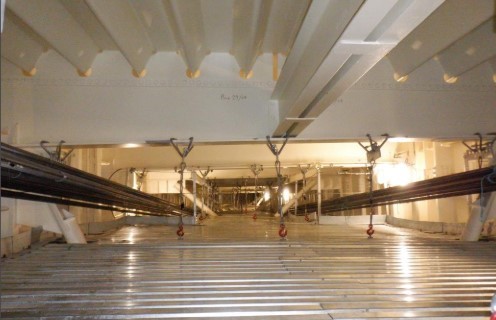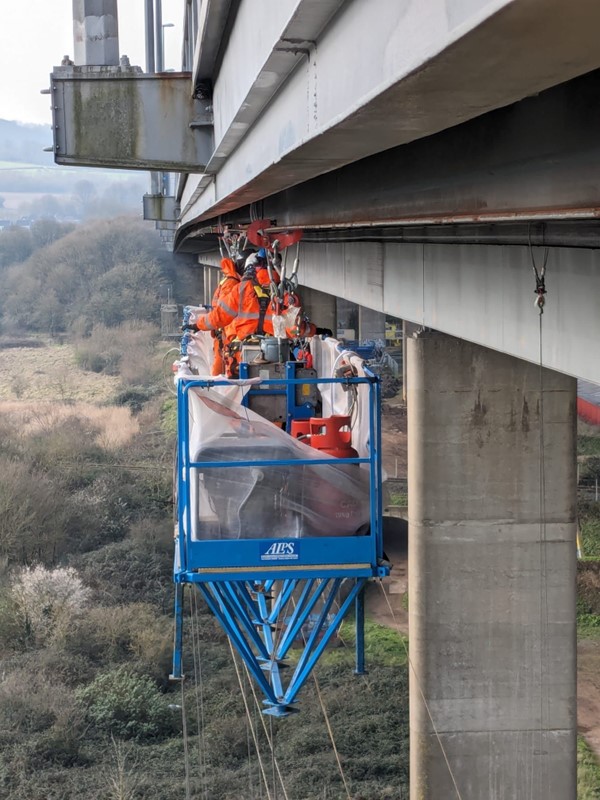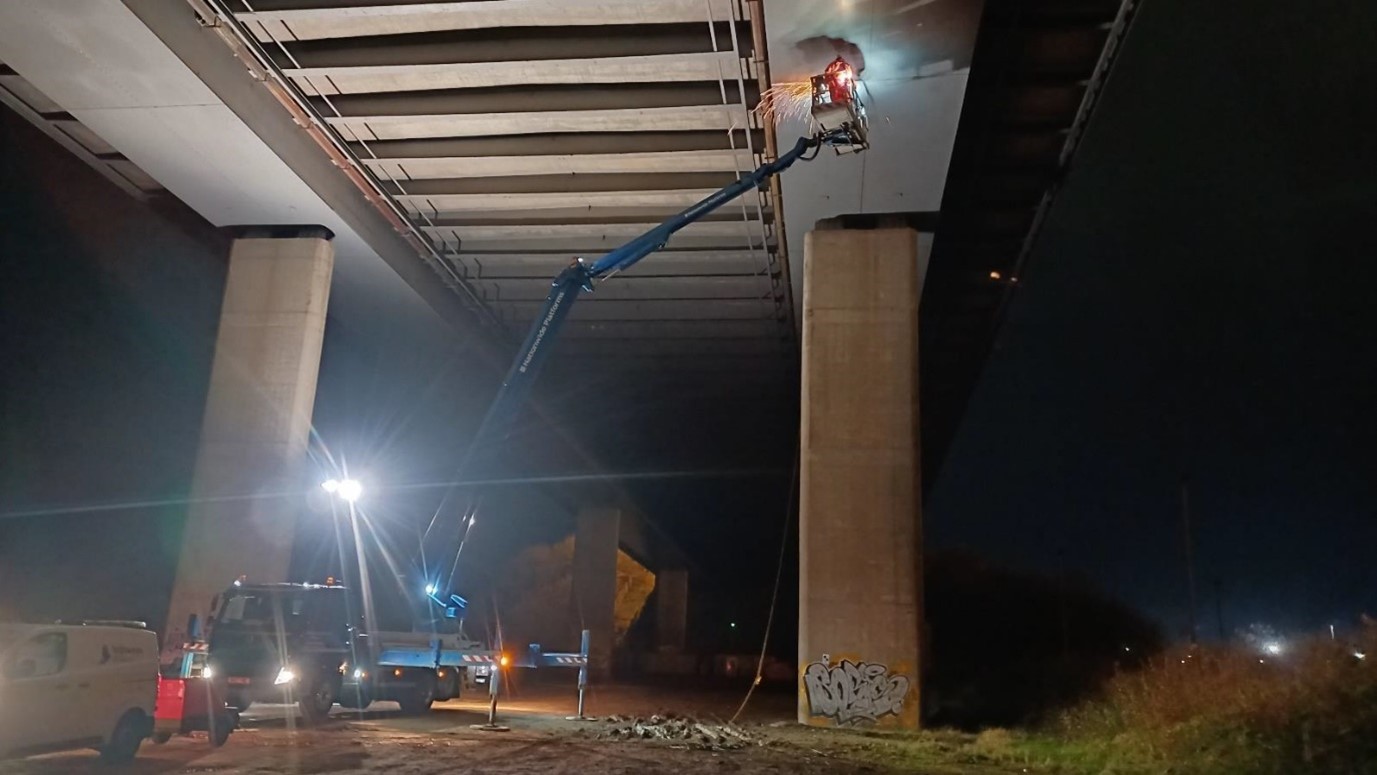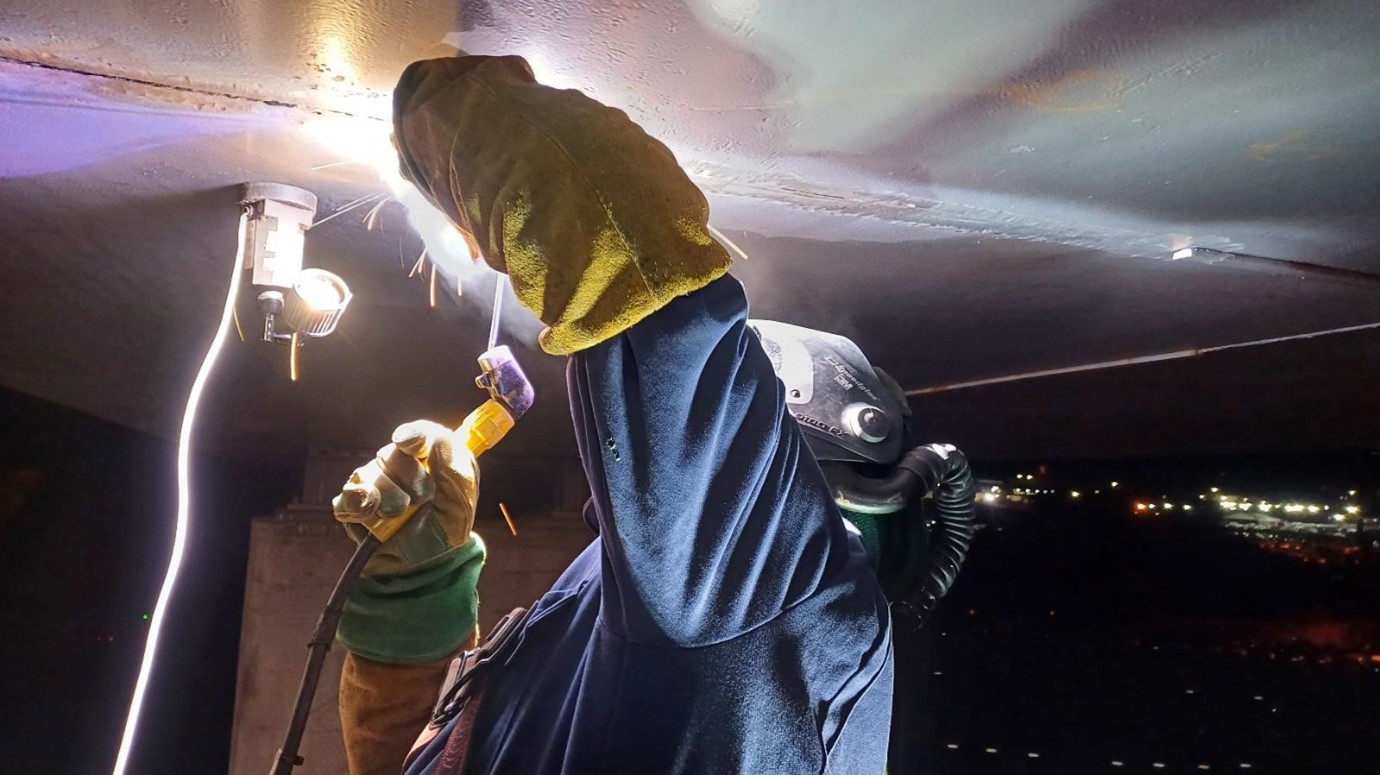
National Highways is undertaking a programme of welding on the underside of Avonmouth Bridge as the infrastructure celebrates 50 years.
The six-lane bridge was built by Fairfield-Mabey, which subcontracted Tarmac Civil Engineering for the foundations, piers and deck concreting works. Construction began in 1969 and after some delays, it opened for traffic in May 1974.
Funding and maintenance of the arterial structure has been the responsibility of central government and National Highways and its predecessors, latterly in partnership with Amey.
Strengthened and widened to eight lanes between 1996 and 2001, the structure:
- is 1,388m in length
- is 40m wide
- has a ground clearance of 30.5m
- is made from reinforced concrete and steel
- is surfaced with a denser, durable and flexible surface material (Gussasphalt)
- features a cycle/footpath alongside the southbound carriageway
- carries an average of 125,000 vehicles per day

A National Highways specialist bridges inspection and maintenance team has been carrying out extensive welding within the structure since October 2023. A further £160,000 of welding work is due to start soon.
Like the welding, most of the maintenance and renewal work goes unseen by the travelling public, taking place underneath the bridge, along the parapets and within the chambers and mezzanine flooring of the structure.

Easier access for inspections
Abseiling engineers and cradle platforms have been employed as part of inspection and maintenance work. Scaffold bridges are also being installed to enable safer repair work and easier access to the structure, while at road level the bridge expansion joints are routinely inspected, assessed and repaired.

National Highways said it is continually exploring safer and modern methods of work. Along with gantry and runway beam studies, the public body has trialled a concrete-climbing robot to potentially lessen the need for rope access.

Senior inspection assurance manager for National Highways’ specialist bridges inspection and maintenance team, Shane Stephens, said: “Like all the infrastructure across the Strategic Road Network, the Avonmouth Bridge requires plenty of TLC, and one of the main challenges is to ensure safe access for the inspection and maintenance work around this large and significant structure.
“The Avonmouth Bridge, like the M4 Prince of Wales Bridge and the M48 Severn Bridge, is a real feat of engineering, and as current custodians, we take a lot of pride in our work as we move into the next 50 years of its life.”











